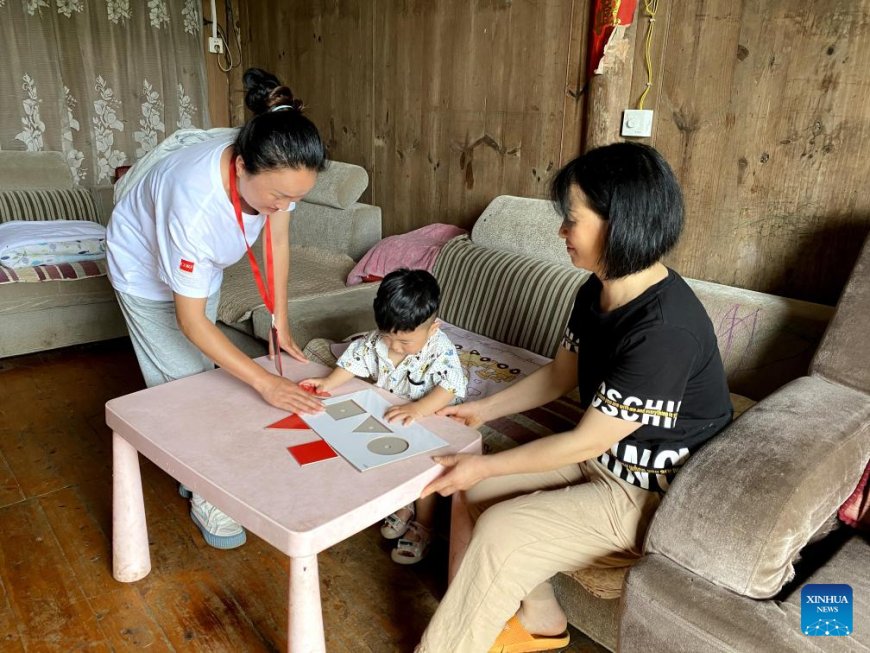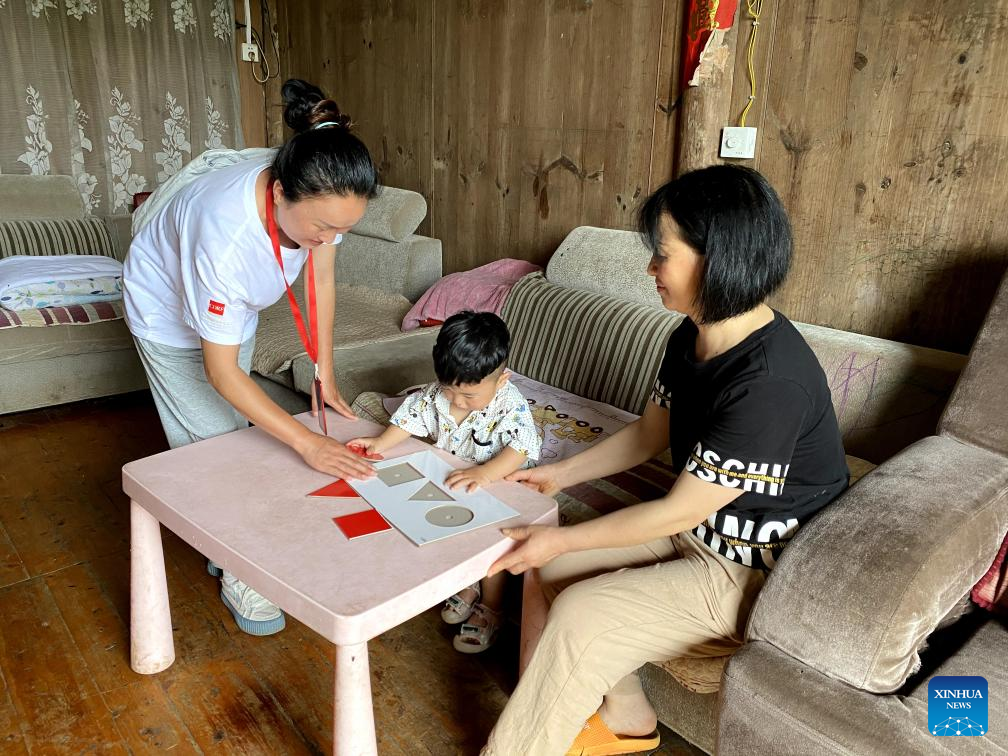Across China: Early childhood education program ensures strong foundation for rural kids
Across China: Early childhood education program ensures strong ... Xinhua

Childcare Program in Rural China Promotes Early Childhood Education

Introduction
CHANGSHA, Aug. 9 (Xinhua) — A home-based early childhood education program in Guzhang County, located in central China’s Hunan Province, has been providing professional childcare to rural children since June 2018. The program, initiated by the China Development Research Foundation (CDRF), aims to improve the quality of interaction between rural children and their caregivers, promote their cognitive, language, social, and overall health development, and explore an early childhood education model suitable for rural China.
Program Details
The program integrates parenting guidance and nutritional advice for children aged 6 to 36 months in underdeveloped rural areas of China. It is designed to address the lack of emphasis on intellectual development education for children whose parents work away from home. Trained instructors, such as Quan Jiacui, provide tailored curriculum designs for various age groups, offering puzzle games and shape recognition activities to boost children’s communication and learning capabilities.
Benefits and Impact
More than 1,400 children and infants have already benefited from the program, with over 60 instructors currently serving nearly 700 children. Parents have reported positive changes in their children’s behavior and increased activity levels. The program has effectively reduced the disparities between urban and rural areas in terms of early childhood education.
Sustainable Development Goals (SDGs)
- Goal 1: No Poverty
- Goal 2: Zero Hunger
- Goal 3: Good Health and Well-being
- Goal 4: Quality Education
- Goal 5: Gender Equality
- Goal 10: Reduced Inequalities
Challenges and Future Plans
The program faces challenges such as long travel distances for instructors and scheduling conflicts due to agricultural activities. However, the county government, in collaboration with the CDRF, has allocated annual funding of 4 million yuan (about 560,000 U.S. dollars) to ensure the program’s smooth operation. Guzhang County plans to expand the beneficiary group to urban residents with financial difficulties to provide a good start in life for all children.
(Intern He Lewei contributed to the story.)
SDGs, Targets, and Indicators in the Article
1. SDGs Addressed or Connected to the Issues Highlighted in the Article
- SDG 4: Quality Education
- SDG 5: Gender Equality
- SDG 10: Reduced Inequalities
The article discusses the home-based early childhood education program in rural areas of China, which aims to improve the quality of interaction between rural children and their caregivers and promote children’s cognitive, language, social, and overall health development. These goals align with SDG 4, which focuses on ensuring inclusive and equitable quality education and promoting lifelong learning opportunities for all. Additionally, the program also addresses gender equality (SDG 5) by providing professional guidance and training to local mothers and kindergarten teachers who can serve as instructors. Lastly, the program contributes to reducing inequalities (SDG 10) by bridging the gap in early childhood education between urban and rural areas.
2. Specific Targets Based on the Article’s Content
- Target 4.2: By 2030, ensure that all girls and boys have access to quality early childhood development, care, and pre-primary education so that they are ready for primary education.
- Target 5.5: Ensure women’s full and effective participation and equal opportunities for leadership at all levels of decision-making in political, economic, and public life.
- Target 10.2: By 2030, empower and promote the social, economic, and political inclusion of all, irrespective of age, sex, disability, race, ethnicity, origin, religion, or economic or other status.
The article highlights the importance of early childhood education and its impact on children’s development, aligning with Target 4.2 of SDG 4. The program aims to ensure that all children, regardless of their background, have access to quality early childhood development and education. Additionally, the program empowers and promotes the inclusion of local mothers and kindergarten teachers as instructors, contributing to Target 5.5 of SDG 5, which focuses on women’s participation and equal opportunities in decision-making roles. Lastly, the program aims to reduce inequalities in early childhood education by providing professional guidance and training to caregivers in rural areas, supporting Target 10.2 of SDG 10.
3. Indicators Mentioned or Implied in the Article
- Frequency of home services
- Curriculum titles
- Number of participating parents
- Number of children benefiting from the program
- Number of instructors serving the children
- Amount of annual funding allocated by CDRF
- Amount of funding allocated by the county
The article mentions several indicators that can be used to measure progress towards the identified targets. These indicators include the frequency of home services, curriculum titles, and the number of participating parents, which reflect the implementation and reach of the program. The number of children benefiting from the program and the number of instructors serving the children indicate the scale of impact. Additionally, the amount of annual funding allocated by the China Development Research Foundation (CDRF) and the county demonstrates the financial support provided for the program’s operation.
Table: SDGs, Targets, and Indicators
| SDGs | Targets | Indicators |
|---|---|---|
| SDG 4: Quality Education | Target 4.2: By 2030, ensure that all girls and boys have access to quality early childhood development, care, and pre-primary education so that they are ready for primary education. | – Frequency of home services – Curriculum titles – Number of participating parents – Number of children benefiting from the program – Number of instructors serving the children |
| SDG 5: Gender Equality | Target 5.5: Ensure women’s full and effective participation and equal opportunities for leadership at all levels of decision-making in political, economic, and public life. | – Number of participating parents (mothers) – Number of instructors (mothers and kindergarten teachers) |
| SDG 10: Reduced Inequalities | Target 10.2: By 2030, empower and promote the social, economic, and political inclusion of all, irrespective of age, sex, disability, race, ethnicity, origin, religion, or economic or other status. | – Number of children benefiting from the program – Number of instructors serving the children – Amount of annual funding allocated by CDRF – Amount of funding allocated by the county |
Behold! This splendid article springs forth from the wellspring of knowledge, shaped by a wondrous proprietary AI technology that delved into a vast ocean of data, illuminating the path towards the Sustainable Development Goals. Remember that all rights are reserved by SDG Investors LLC, empowering us to champion progress together.
Source: english.news.cn

Join us, as fellow seekers of change, on a transformative journey at https://sdgtalks.ai/welcome, where you can become a member and actively contribute to shaping a brighter future.







